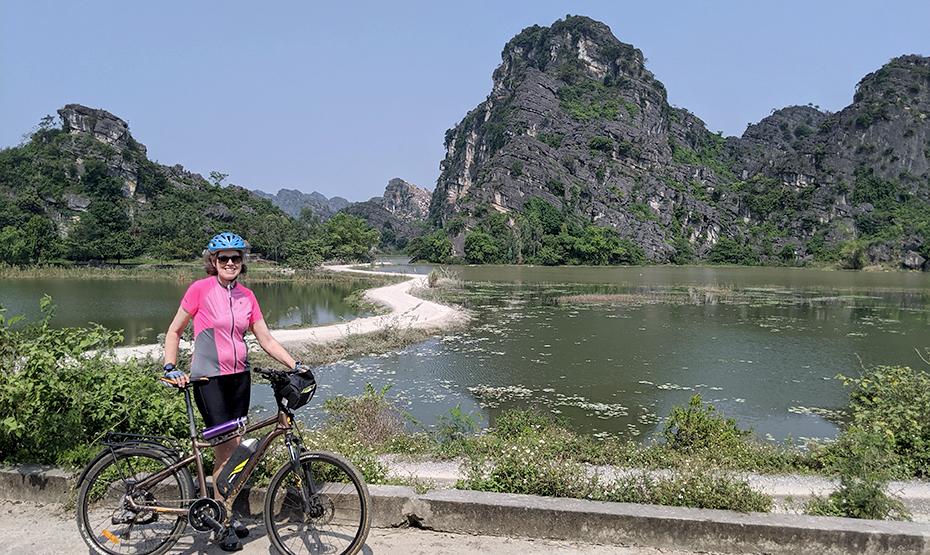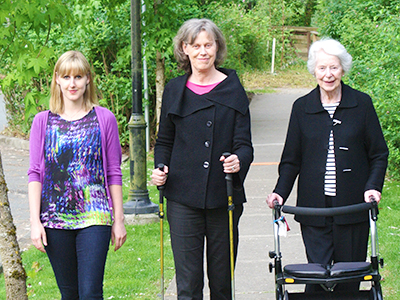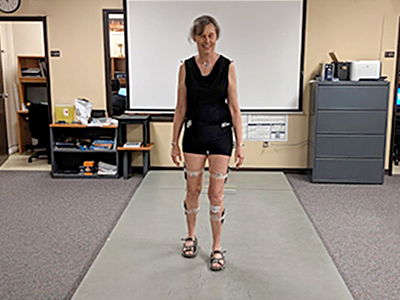
“I say yes to participate in research because hopefully my involvement can help future generations avoid the pain and disability osteoarthritis can cause.”
– Sheila Kerr, West Vancouver
Sheila Kerr knows the importance of keeping her joints strong. The 65-year-old retired physiotherapist and education coordinator developed osteoarthritis (OA) from a childhood injury and genetic predisposition. After decades of managing her symptoms by leading a healthy lifestyle, Kerr recently participated in a research study on shoe-worn insoles for people with knee OA to explore options that could provide more support for her knees.
“One thing you learn about osteoarthritis is that there are a whole host of tools you can use to manage your condition,” says Kerr.
"The more tools you have in your toolkit to manage osteoarthritis, the better.”
While playing soccer as a child, Kerr tore the anterior cruciate ligament (ACL)—which stabilizes the knee joint—in her left knee. MRIs and CT scans had yet to be invented back in 1967, and it was not until Kerr was in her 40s that she received an accurate diagnosis. By that time, she had developed OA, a degenerative disease caused by damaged joints, in her knees and other parts of her body.
“What’s happened over time, because I tend to protect my left knee, is that I have more advanced OA in my right hip.”

Due to a genetic predisposition to OA—her mother and several other family members have OA—Kerr also has it in her ankles, feet, thumbs and back. Sometimes it makes her feel achy and produces a dull pain that can last hours, and sometimes a flare-up of symptoms can disturb her sleep.
“I used to walk up the side of mountains, and now I mostly stick to flatter surfaces,” she says.
“Just because the osteoarthritis is there doesn’t mean you’re on a road to despair if you manage things properly.”
Kerr is in good company. Around five million Canadians have OA, which is the most common form of arthritis. And with Canada’s aging population, it is anticipated that those rates will continue to rise1.
Extra support helps to stabilize the knee joint
In 2012, Kerr met Vancouver Coastal Health Research Institute researcher, Dr. Michael Hunt. Seven years later, she became a participant in a research study Hunt is leading into the use of shoe-worn insoles as one strategy to treat knee OA.
Kerr was fitted for six different types of shoe-worn insoles with different densities of padding and materials, which she was able to keep after participating in the study.
Wearing her new insoles, Kerr underwent a 3D walking assessment in the Motion Analysis and Biofeedback Laboratory at UBC Hospital to track her lower limb and foot position. She also filled out a questionnaire and had measurements taken of her feet and lower leg. The last step in the study was to stand in a specialized open MRI machine while wearing the different insoles one at a time.

The study is examining how the weight of the body is distributed across the joints. The manner in which bones stack on top of one another influences joint position, and research has shown that shoe-worn insoles can redistribute the load born by the knees by six to 10 per cent.

Even a small redistribution of weight can make a big difference in terms of pain management, notes Hunt. However, the most effective type of orthotic varies by individual.
“There is no one-size-fits-all approach for osteoarthritis,” says Hunt. “We hope this research will aid in the development of patient-centred orthotics based on biomechanics, such as foot placement.”
1 Arthritis Society - Osteoarthritis
This is one patient's story of participating in a research study. Your experience may differ. Learn about clinical trials before participating.


